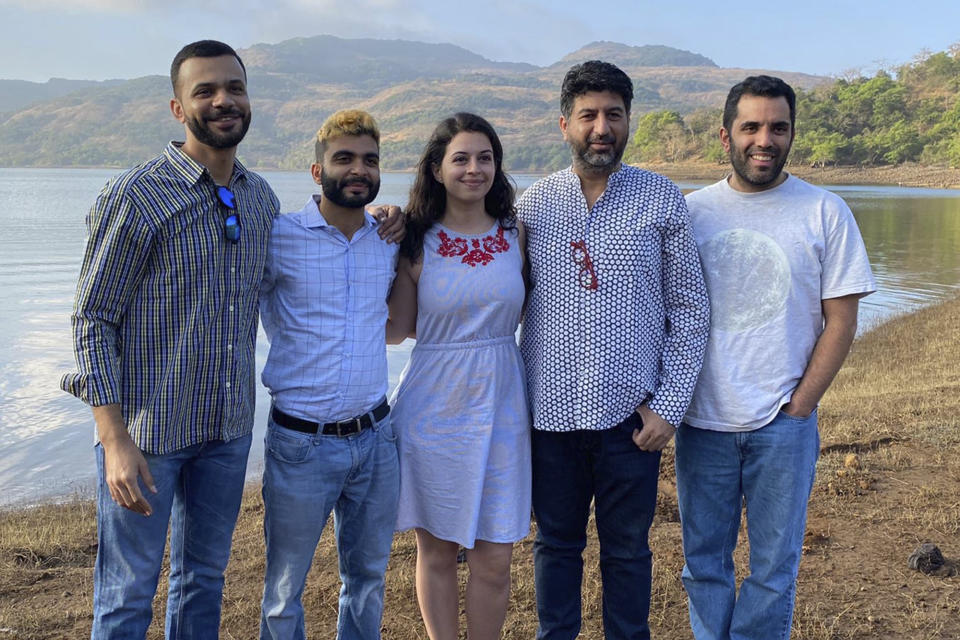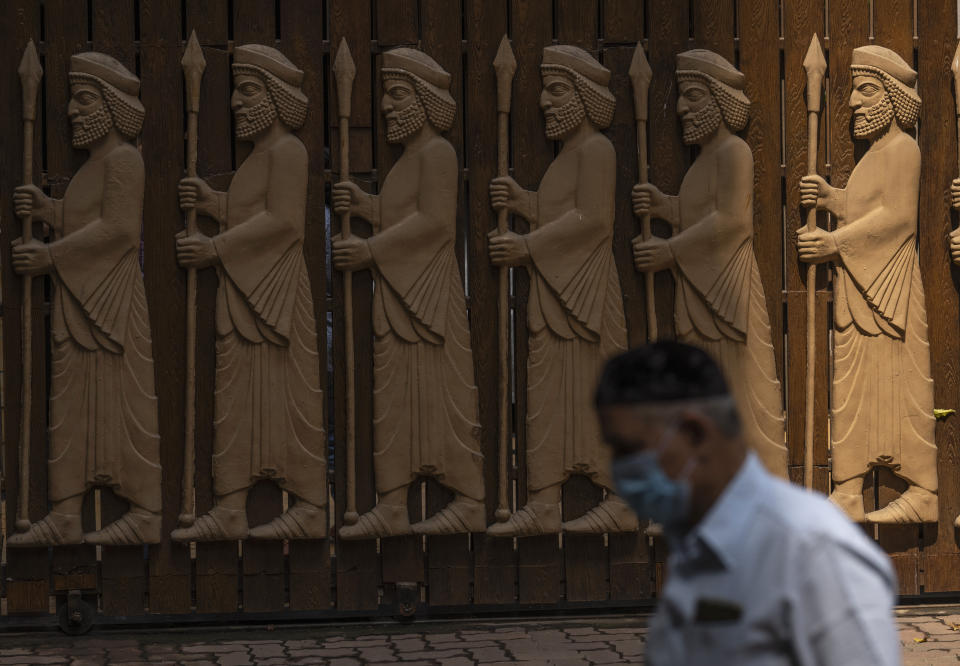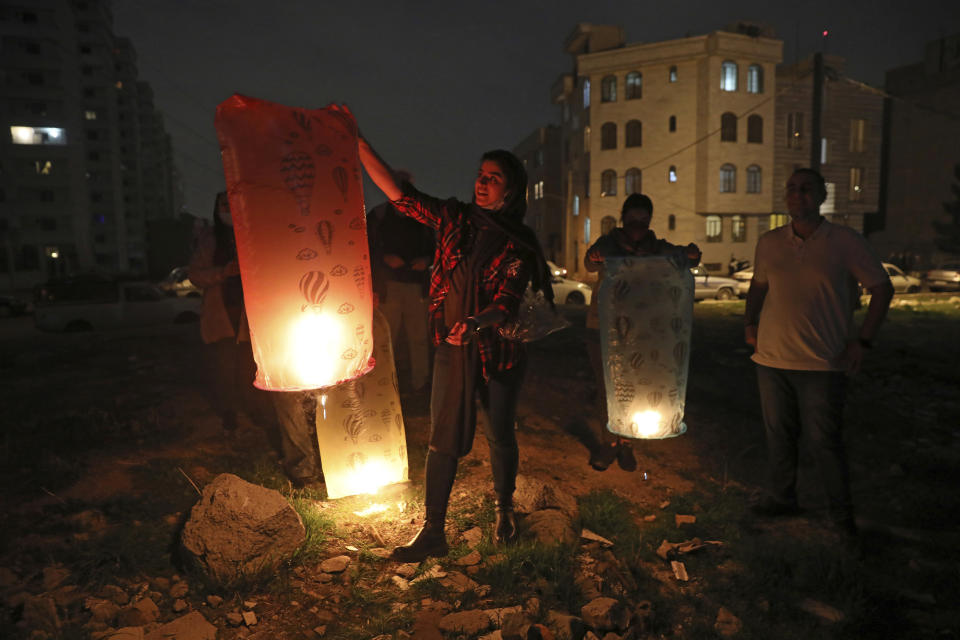Zoroastrians confront depletion of their ancient faith
NEW YORK (AP) — Among the world’s present-day religions, Zoroastrianism, founded more than 3,000 years ago, is one of the most ancient and historically influential. Yet even though its adherents maintain vibrant communities on four continents, they acknowledge their numbers are dauntingly small — perhaps 125,000 worldwide.
Starting Friday, about 1,200 attendees from 16 countries will be assessing their faith’s prospects during the four-day World Zoroastrian Congress in New York City, the first one held in the United States since 2000.
The agenda reflects a keen awareness of the challenges facing their religion. Prospects for growth are limited, given that Zoroastrians don’t seek to convert outsiders and — in many cases — don’t consider the children of mixed marriages to be members of the faith. Yet there’s also some cause for optimism.
“Have we ever been in a time like this?” wondered Arzan Sam Wadia, a Mumbai-born, New York-based architect who is co-chair of the congress.
“Should we all despair and give up — ‘We can’t do anything, let’s just die peacefully’ — or do we have hope for the future?” he told The Associated Press.
Here’s some basic information about the faith:
HISTORY
Founded more than 3,000 years ago, Zoroastrianism is one of the oldest monotheistic religions still in existence, predating Christianity and Islam by many centuries. Details of its origin are imprecise, however.
The prophet Zoroaster, also known as Zarathustra, is revered as the founder of the faith, which became dominant in Persia before Arab Muslims conquered the region in the 7th century.
Wary of persecution, many Zoroastrians left for destinations in western India, notably Mumbai and Gujarat. India’s Zoroastrian population — known as Parsis — is larger than that of any other country, though the numbers there are declining while they increase in North America, Britain, Australia and New Zealand.
BELIEFS
At its core, Zoroastrianism emphasizes a never-ending battle between good and evil — a contest between the religion’s God, Ahura Mazda, and an evil spirit, Ahriman. Believers have the freedom to make good or bad choices; they were exhorted by Zoroaster to think good thoughts, say good words and do good deeds.
Scholars say these tenets and other aspects of Zoroastrianism had significant influence on other religions, notably Christianity, Islam, Judaism and Buddhism.
“You have these ideas that have fundamentally shaped Western society,” said Jamsheed Choksy, a professor of Central Eurasian Studies at Indiana University. “Fighting the good fight, a purpose of existing to do good, to make the world flourish, to work together, to respect and love each other ... all that goes back to Zarathustra.”
Traditional temples house a sacred fire intended to burn perpetually. Another ancient custom: raised, circular structures known as Towers of Silence, where dead bodies were placed to decompose rather than being buried.
CULTURE
The Nowruz holiday, which incorporates ancient Zoroastrian traditions and marks the Persian New Year, remains a major event on the Iranian calendar. It is widely celebrated, on or around March 21, in other regions that once were part of the Persian empire.
For Zoroastrians who left Iran and settled in India or eventually in more distant regions, their communities became renowned for producing entrepreneurs and philanthropists. Becoming wealthy was encouraged within the faith, but with the proviso that riches should be used to help others.
Jamsetji Tata, born in India in 1839, became one of the most prominent industrialists and philanthropists of the 19th century, and the Tata Group that he founded is one of the world’s largest multinational conglomerates.
Another flourishing conglomerate, the Wadia Group, was founded by Parsi shipbuilder Lovji Wadia in 1736. The company built scores of war vessels for Britain; its holdings today include a fashion magazine, a cricket team and manufacturers of textiles and biscuits.
However the most famous Parsi of modern times was neither an entrepreneur nor industrialist: Freddie Mercury, the legendary lead vocalist of the rock band Queen, was born Farrokh Bulsara in 1946 to parents from Gujarat who were living in Zanzibar.
FUTURE
The possibility of further shrinkage of the global Zoroastrian community will be very much on the minds of attendees at the New York congress.
Several sessions will focus on Zoroastrians in their 20s and 30s. In describing the gathering, organizers promised that participants will come away “reassured that the destiny of the faith is secure in the hands of passionate and visionary young Zoroastrians.”
Other topics on the agenda include entrepreneurship, interfaith collaboration and the role of women.
Wadia, the congress' co-chair, who is not related to the family behind the Wadia Group, has leading roles in two separate initiatives aimed at strengthening the religion’s prospects.
One is a global survey being conducted by SOAS University of London that aims to shed light on factors that are promoting or inhibiting Zoroastrianism's growth and vitality.
Wadia also is program director of Zoroastrian Return To Roots, which organizes trips to India for young Zoroastrians who want to learn more about their religion’s history and culture.
Wadia is convinced the faith will survive, but perhaps while undergoing major changes. In North America, for example, he believes that adherence to specific cultural traditions might diminish, even as Zoroastrians maintain a basic set of spiritual guidelines.
SOAS University’s Almut Hintze, a professor of Zoroastrianism, has described the global community as “microscopically small” and worries about the decline of Parsis in India.
“However, Zoroastrians are doing well in the global diaspora,” she said via email. “It could well be that numbers are going to stabilise, although secularisation and the marriage laws pose threats.”
Choksy, the Indiana University professor, sees North America as the most promising region for growth. He estimates that the United States and Canada are now home to more than 30,000 Zoroastrians, higher than the latest figure for Iran.
“North America is where there’s hope,” Choksy said. “It’s partly due to immigration, but also the communities have more children, they feel more stable. It’s the bright light.”
___
Associated Press religion coverage receives support through the AP’s collaboration with The Conversation US, with funding from Lilly Endowment Inc. The AP is solely responsible for this content.

 Yahoo Movies
Yahoo Movies 



